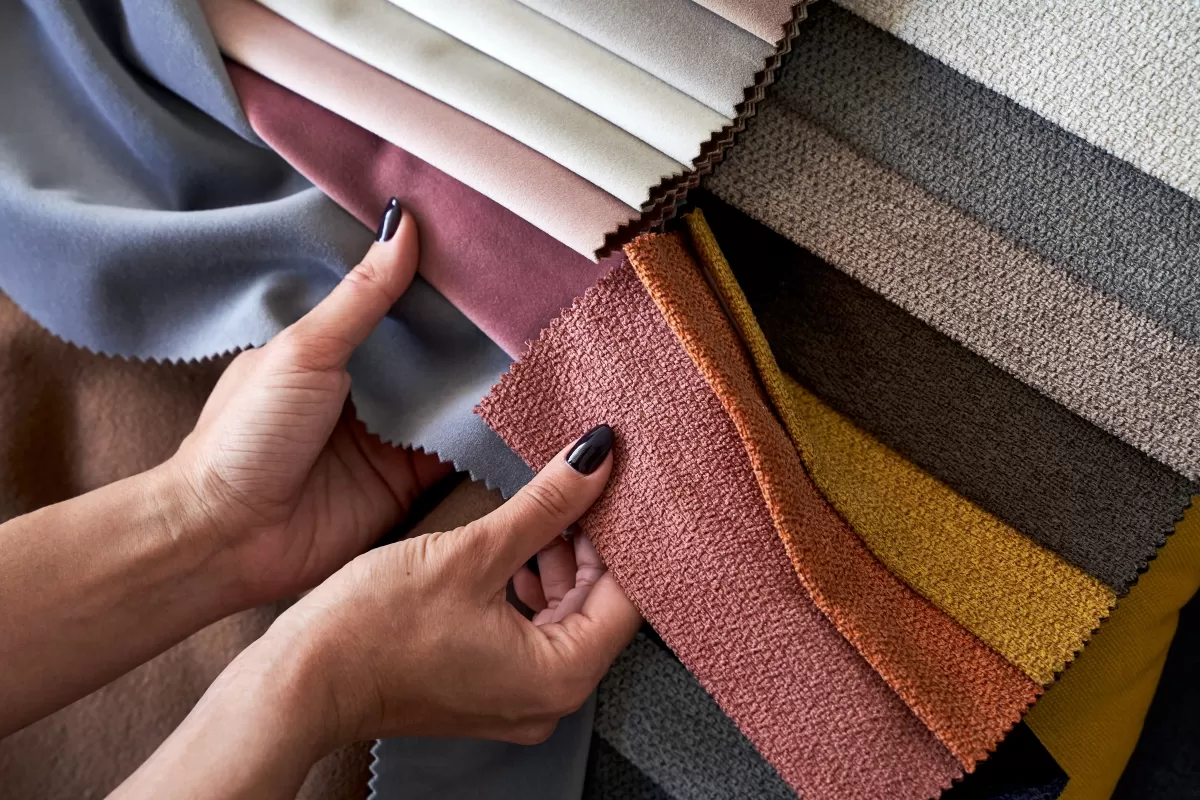07 Apr 2025
Polyamide vs. polyester: differences and applications
Polyamide or polyester: comparing two materials in textile yarns
In the textile industry, polyamide and polyester are among the most widely used synthetic fibers, thanks to their versatility and durability. Both materials are employed in the production of technical, sports, and casual apparel, but they offer very different characteristics in terms of comfort, longevity and performance. In this article, we’ll explore the key differences between polyamide and polyester—two of the most commonly used synthetic fibers in the textile sector. We’ll analyze their properties, applications and technical benefits, providing a useful comparison for manufacturers, designers, and brands seeking innovative, high-performance solutions for their collections.
Key differences between polyamide and polyester
Although both polyamide and polyester are synthetic polymers, their physical and mechanical properties make them suitable for different uses. Let’s take a closer look at what sets them apart.
1. Properties and chemical composition
Polyamide is a synthetic fiber derived from polymers such as polyamide 6.6 or 6, known for its linear molecular structure that ensures mechanical strength, high elasticity and long-term durability. These characteristics make it ideal for creating fine, uniform, high-performance yarns that integrate easily into high-tech manufacturing processes like circular knitting or seamless production.
Polyester, on the other hand, is composed of polyethylene terephthalate (PET)-based polymers. While it is less elastic than polyamide, it offers good dimensional stability and resistance to wrinkling and shrinking. Its spinning performance is similar to that of polyamide in terms of speed, but it poses more challenges during dyeing, requiring high temperatures and pressures to achieve consistent and long-lasting results. Due to its lower elasticity and stiffer texture, it is less suited for garments requiring high adaptability and skin-contact comfort.
2. Comfort and feel
Polyamide stands out for its soft, silky feel, making it ideal for garments worn close to the skin, such as underwear, activewear and seamless clothing. Its high natural elasticity supports a snug yet comfortable fit, allowing fabrics to follow the body’s contours and ensure maximum freedom of movement. During production, polyamide yarns are uniform and easy to work with on fine-gauge machines, resulting in smooth, compact surfaces.
Polyester, in contrast, has a drier, stiffer texture and less ability to conform to the body. This makes it less suitable for garments requiring high elasticity and prolonged comfort. While polyester is versatile, its yarns tend to produce less soft fabrics, which may be less pleasant to the touch in highly technical or close-fitting garments.
3. Moisture management and breathability
With a moisture regain rate of 4%, polyamide offers superior sweat management, enabling fabrics to keep the skin dry even during intense activity. This makes it an ideal choice for activewear, sportswear and underwear, where breathability is essential.
Polyester, with a near-zero moisture regain, retains more sweat on the fabric’s surface. While this makes it less suitable for garments that require active thermal regulation and extended comfort, it remains a solid choice for casual clothing and everyday wear.
4. Strength and durability
Polyamide is valued for its excellent resistance to wear, tension and abrasion, making it particularly suitable for yarns used in technical and sports garments exposed to frequent mechanical stress. Its polymer structure ensures long-term durability, even after many wash and wear cycles.
Polyester, while offering good general resistance, performs less well under prolonged friction and is more prone to surface wear and pilling—the formation of small fuzz balls on the fabric. For this reason, it’s often preferred for outerwear, casual garments and decorative fabrics, where mechanical strength is less critical than in performance apparel.
5. Maintenance and ease of use
Polyamide is known for drying quickly and maintaining its elasticity, shape and fit over time, even after repeated washing. These qualities make it a reliable material for yarns requiring high dimensional stability and prolonged comfort. However, to preserve its performance, it may require more care during washing, with a preference for moderate temperatures and gentle cycles.
Polyester, in contrast, is highly wrinkle-resistant, doesn’t need ironing, and withstands frequent washing—even at higher temperatures. Its ease of care and maintenance makes it a practical choice for fabrics intended for regular use, where user convenience is a top priority.
Sustainability: a new approach to synthetic materials
Today, sustainability is a key factor in textile material selection—for manufacturers, brands, and consumers alike. To assess the environmental impact of fibers, tools like Life Cycle Assessment (LCA) are used to analyze all stages of a product’s life cycle, from production to disposal.
Although synthetic fibers are mostly derived from fossil resources, they are evolving through more responsible processes and the use of alternative raw materials. Today, it is possible to develop yarns from industrial waste—such as production scraps or end-of-life tires—or from renewable sources, significantly reducing the environmental impact compared to conventional materials. These innovations allow manufacturers to maintain high technical performance while adopting a more circular, eco-conscious approach.
In recent years, the textile industry has faced criticism for the environmental impact of synthetic fibers. However, companies like Fulgar are leading innovation to make these materials more sustainable, developing solutions that reduce environmental footprint without compromising performance—ensuring durability, comfort, and elasticity.
Fulgar has developed cutting-edge solutions such as Q-NOVA®, a regenerated polyamide that lowers environmental impact without sacrificing technical performance, and Q-CYCLE®, a yarn made from recycled polyamide using an innovative process that supports greater circularity in textiles. Among the most advanced solutions is also EVO®, a bio-based yarn derived from renewable raw materials that offers lightness, softness, and a reduced ecological footprint. Additionally, Q-GEO® is a bio-based polyamide developed by Fulgar, made from renewable sources and designed to deliver high performance with a lower environmental impact.
These innovations, the result of ongoing research and development, show that the future of synthetic textiles can be more responsible—combining high performance with environmental care.
Polyamide or polyester: Which one to choose?
The choice between polyamide and polyester depends on design goals, garment use, and the level of performance required. Polyamide is the ideal solution for those seeking high-performance yarns that offer elasticity, softness, breathability and durability—even under intense use. It’s particularly suitable for technical, sports, and skin-contact garments, where comfort and longevity matter most.
Polyester, on the other hand, is a practical, functional choice for mass-market products where ease of care, wrinkle resistance and lower costs are top priorities.
For textile manufacturers and brands focused on quality, innovation, and sustainability, Fulgar offers a wide range of polyamide yarns designed to meet the most advanced needs in performance and environmental responsibility.
Contact Fulgar to find the best solution for your project.





